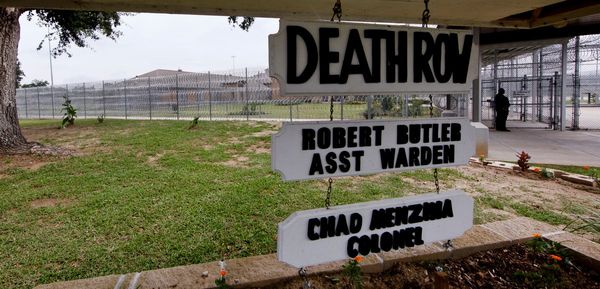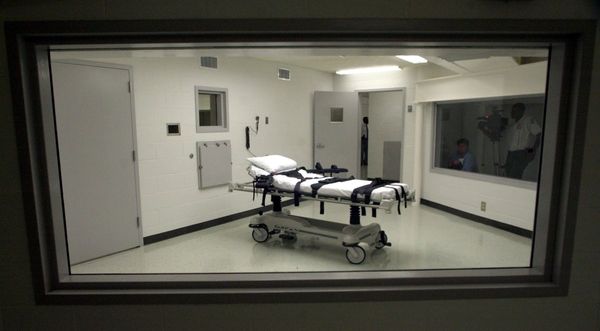Patient care and wellbeing are being put at risk by the ever-growing NHS waiting list in Wales, it is claimed.
Latest monthly data from the Welsh Government shows that more people than ever before are awaiting some form of non-urgent treatment on the health service.
In December 2021 there were 683,331 people on the waiting list – a rise from the 682,279 recorded in November and way up on the 456,809 seen just before the pandemic hit in March 2020. The growth has slowed, up 0.2% in the last month, but it is still rising.
Read more: The people living in constant fear of going blind as pressure on NHS eye care services grow
More than a third (244,331) of people currently on an NHS Wales waiting list have been on it for nine months or more, up on the 241,667 recorded the month before. In comparison there were only 28,294 waiting this long in March 2020.
The largest number of patients currently waiting are for trauma and orthopaedic surgery (97,706), general surgery (84,698), ear, nose and throat (56,163), and urology (41,168).
The Welsh Government wants 95% of patients to wait less than six months (26 weeks) and no-one to wait nine months (36 weeks) from referral to treatment. But when it made the decision to cancel all non-urgent outpatients and appointments to focus on Covid cases in March 2020 these waiting lists skyrocketed.
Median waiting times for that same month in Wales are more than double that of England (23.2 weeks compared to 10), while one in four Welsh patients are waiting over a year for treatment compared to only one in 19 in England.
Meanwhile Welsh Ambulance Service figures for January showed that barely half (52.5%) of immediately life-threatening "Red" calls were reached within the target time of eight minutes. While this is well below the 65% target it was an improvement on the 51.1% recorded in December. The average response time to Red calls was seven minutes and 39 seconds in January, 13 seconds faster than the previous month.
January was the eighth month in a row where, on average, there were more than 100 immediately life-threatening calls made each day. However there was a decrease in the total number of calls made to the ambulance service on the previous month.
The slowest ambulances to reach life-threatened patients were in the Powys health board area with only 42.1% arriving within the eight-minute target. Only Cardiff and Vale UHB (68.1%), Aneurin Bevan UHB (56.5%) and Swansea Bay UHB (50.9%) posted figures above 50%.
When it came to A&E departments there was also a slight improvement in the four-hour waiting times in January. Some 68.2% of people spent four hours or less in these units before being admitted, transferred, or discharged in January - up on the 66.5% in December. However, A&E attendances in January were at their lowest level since last March.
Wrexham Maelor Hospital recorded the worst four-hour A&E figures last month with 49.1% followed by Ysbyty Glan Clwyd with 50%. Overall in Wales 8,998 patients waited more than 12 hours in A&E – up on the 8,554 recorded in December – but the target is for no-one to wait that long. Patients aged over 85 spent an average of over eight hours to be seen in A&E – the longest average wait since comparable data was first recorded in April 2012 for this age group.
Commenting on the latest NHS performance figures Dr Suresh Pillai, vice president of the Royal College of Emergency Medicine (RCEM) in Wales, said: "We know long waits threaten patient safety and may even cause harm or death. These long waits knock-on throughout the system, with ambulances queuing outside emergency departments unable to return to the community and respond to urgent and emergency calls.
"We are deeply concerned about the current state of the health service in Wales. Without effective action urgent and emergency care will fall deeper into crisis, and the elective care waiting lists will continue to grow."
However Darren Hughes, director of the Welsh NHS Confederation, was more upbeat about the current situation facing the health service.
He said: "Set against a backdrop of a winter like no other including dealing with the full force of the Omicron wave in December and January there were some signs of progress, including the number of patients waiting for treatment in December increasing at the slowest rate since the start of the pandemic.
"In spite of immediately life-threatening calls made to the ambulance service each day averaging over 100 for the eighth consecutive month, some improvement was seen against the eight-minute ambulance response target. In emergency departments, despite average daily attendances increasing, more patients were seen within four-hour target, although things worsened in other areas.
"We understand that these small improvements don't reflect the experiences of all patients and many continue to wait longer than they should for treatment, whether for scheduled or urgent care. NHS leaders are painfully aware of this and more is being done to support those on waiting lists.
"What these figures don't show are the pressures facing primary and community care services, which NHS leaders tell us are easily equally as stretched as secondary care. Waiting lists and built-up demand for care in these areas are just as worrying, especially when considering the unknowns of how many people are yet to come forward for treatment because of the pandemic.
"NHS leaders expect there to be a significant uncovering of 'late presentations' emerging over the next two years, due to the impact Covid had on primary care, translating into further harm in the long run. While protective measures against Covid are being eased in light of the stabilising situation, the impact of Covid on the NHS is going to remain with us for some time. This is why the whole system needs to be equally supported and the government needs to clearly articulate the reality of the challenges ahead to the public."
Welsh Government figures also revealed that 58.6% of cancer patients started their first definitive treatment within 62 days of it first being suspected – a rise on the 57.9% recorded the previous month but below the target of 75%. It meant an estimated 643 people failed to be treated within 62 days of first being suspected of cancer in December.
The data also shows that the number of patient pathways waiting for therapies fell slightly in the last month after increasing every month in 2021.
Plaid Cymru's spokesman for health and care, Rhun ap Iorwerth MS, has called on the Welsh Government to publish its action plan for how to address the backlog now. Earlier this month Health Minister Eluned Morgan confirmed it wouldn't be released until April.
"The evidence tells us that there is less pressure on our NHS from coronavirus, and yet Welsh Government has been too slow to react to this good news. When faced with such a time-sensitive task as getting the NHS back on track, there is no time to waste," he said.
"Undoubtedly the pandemic has had a massive impact on the ability of our NHS to diagnose and treat patients – the waiting times now are beyond shocking. But they weren't good enough before the pandemic.
"The Welsh Government should be ready with a recovery plan now, just as they should have had a plan in place before the pandemic. April is too long to wait for such an important matter."
Welsh Conservative and Shadow Health Minister Russell George MS said: "Every month, these figures only go to show how much work there is to be done to get our National Health Service into a fit state that works for patients and staff.
"It is undeniable that emergency and elective care waits have reached these heights because of the pandemic – showing there were plenty of harmful health consequences to restricting healthcare services – but we cannot just go back to what it was like before Covid either.
"The treatment waiting list was already at a record high two years ago, the longest-ever pre-Covid A&E waits were in 2019, NHS beds have been cut year-on-year by a third of what they were when Labour entered power, and there are still thousands of staff vacancies to fill."
A Welsh Government spokesperson said: "Thanks to the heroic efforts of our NHS staff we only saw the waiting lists increase by 0.2% in December, the lowest increase since the start of the pandemic, despite the fact that so many staff were diverted to the super-fast rollout of the booster programme during that month.
"Demanding winter pressures, the Omicron wave and the need to support the vaccination programme continued to place considerable strain on the NHS in December 2021. These challenges led to the postponement of a number of appointments and planned treatments across Wales and some people were waiting longer for treatment than we would like.
"We want to thank our healthcare workforce for delivering vast amounts of booster vaccinations while continuing to provide high-quality care to hundreds of thousands of patients each month.
"We have provided £248m so far to support our NHS recovery plan. In April we will publish a detailed plan on how we will tackle the waiting times for patients whose treatment has been delayed by the pandemic."
To get the latest WalesOnline newsletters emailed to you directly for free click here.







